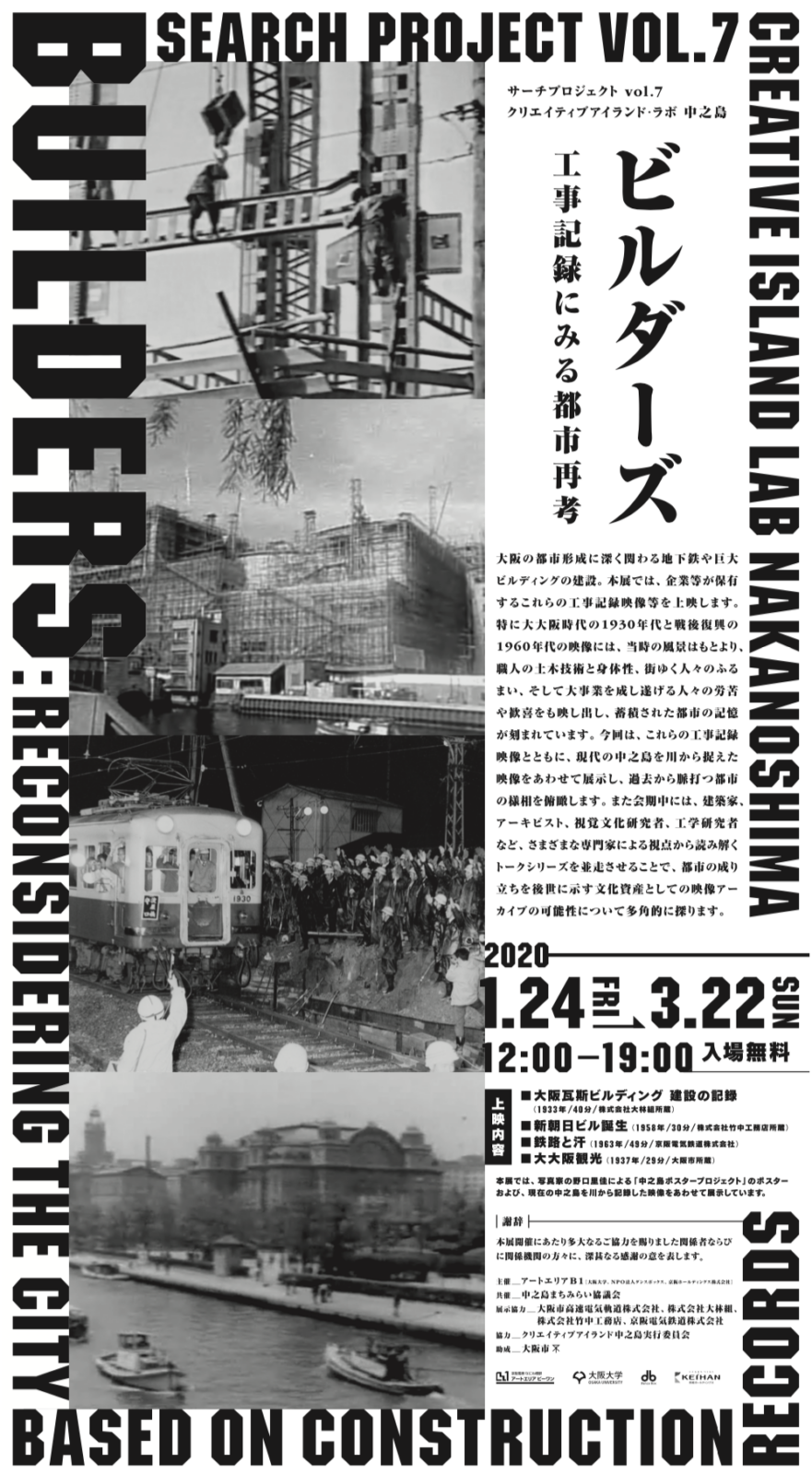Video materials of valuable construction records will be screened for a limited time. A memory of the city explored through the screening exhibition x talk series.
Construction of subways and huge buildings that are deeply involved in the formation of cities in Osaka. In this exhibition, we screened footage of construction of subways and huge buildings that are deeply involved in urban formation in Osaka owned by companies.
In particular, the construction record videos of the 1930s during the Great Osaka era and the 1960s after the war reconstruction show not only the scenery of the time, but also the civil engineering and physicality of craftsmen, the behavior of the people who go to the city, and the labor and joy of those who achieve big business. It also reflects the memories of the accumulated city. This time, along with these construction records, we exhibited images of modern Nakanoshima from the river, and planned to give a bird's-eye view of the city that has been pulsating from the past. During the exhibition, we tried to explore the possibilities of video archiving as a cultural asset that shows the origin of the city from various perspectives, such as architects, archivists, visual culture researchers, and engineering researchers.
Exhibition name:
"BUILDERS: Reconsidering The City Based on Construction Records"
Exhibition Period:
January 24 (Fri) - March 22 (Sun), 2020 12:00-19:00
※The exhibition will be extended until Tuesday, April 7 to spread visitors in view of the impact of the spread of COVID-19 infection.
Venue:
Art Area B1
Closed days:
Closed on Monday (open only on 2/24, closed on 2/25 the following day)
Entrance fee:
Free
Exhibition Cooperation:
Osaka Metro Co., Ltd., Obayashi Gumi Co., Ltd., Takenaka Corporation, Keihan Electric Railway Co., Ltd.
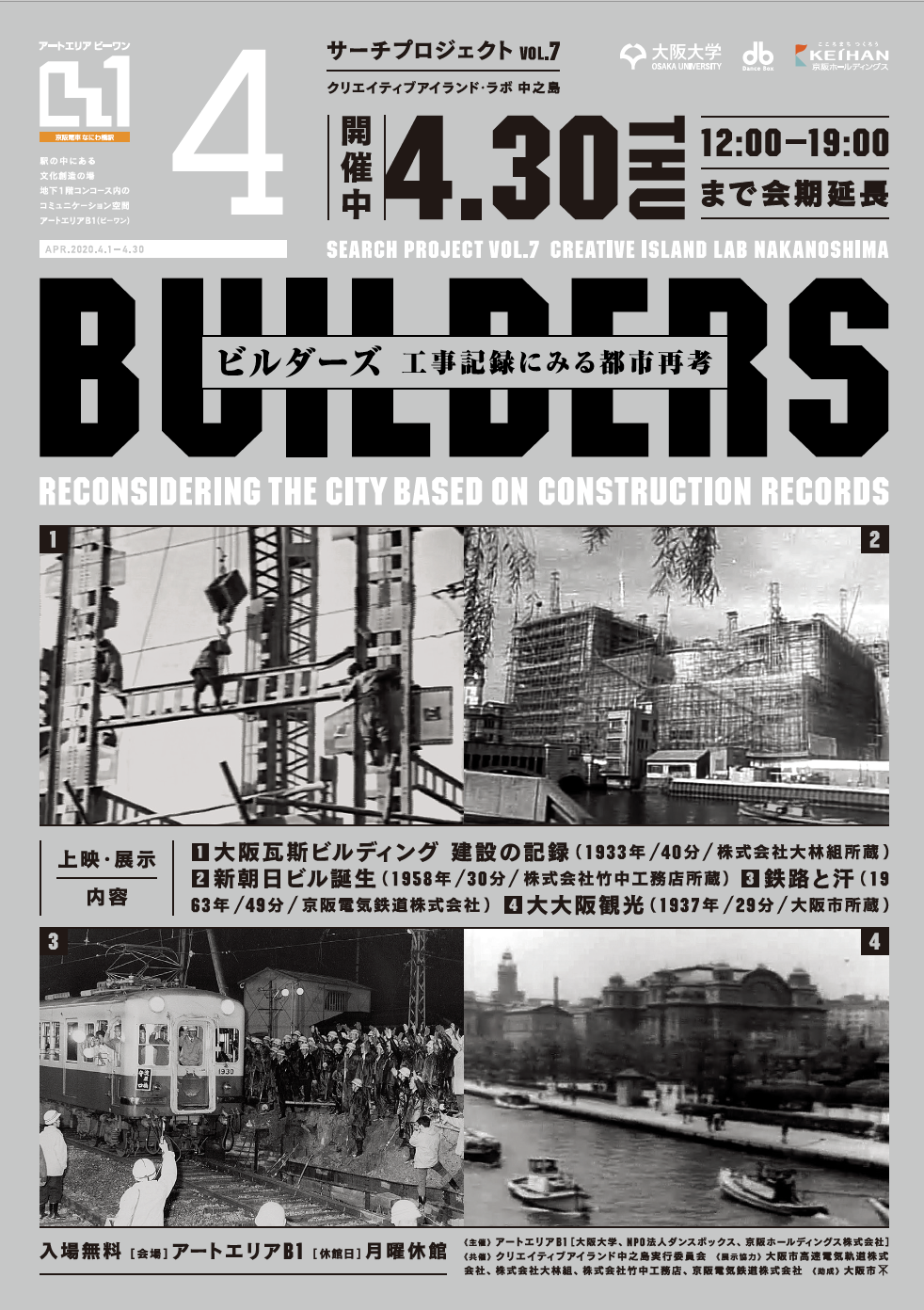
Contents of the exhibition
"Record of Osaka Gas Building Construction"
(1933 / 40 minutes / owned by Obayashi Corporation)
A video of the construction of the Osaka Gas Headquarters Building, which faces Midosuji Avenue and is currently designated as a registered Tangible Cultural Property of the country. Designed by Takeo Yasui, construction by Obayashi Gumi. The so-called Gas Building, which was commonly known as a high-call facility with state-of-the-art equipment such as air conditioning and heating, and with a dining room, gas cooking training room, and lecture hall, was a major business that mobilized nearly 180,000 people in about three years. You can look at the behavior of the time, such as a tackman who assembles the steel frame, a high heat rivet thrown away in the air from a high-temperature craftsman.
"Yodoyabashi Extension Construction 1960-1963 Railway and sweat"
(1963/49min/Keihan Electric Railway Co., Ltd.)
A record of three years of construction of the underground extension of the Keihan Electric Railway Yodoyabashi (between Temmabashi Station and Yodoyabashi Station) Tunnel construction to minimize the impact on the heavy traffic Tenjinbashi, workers digging the soil with a scoop, and commissioning on underground lines are recorded along with detailed explanations of the construction method. The enthusiastic and dramatic production of Keihan's longing for private railways to enter central Osaka is also interesting as a video work. The scenery and world of the time, such as the office district and the state of the people near Temmabashi, are engraved.
"Dai Osaka Sightseeing"
(1937/29min / Collection of Osaka City)
Video material produced by Osaka City Electric Bureau and Industry Department for the purpose of promoting municipal transportation and promoting tourism. The Osaka Municipal Subway, which opened in 1933, connectsNakanoshima and other landmarks such as Tsutenkaku, Sumiyoshi Taisha Shrine, Osaka-jo Castle,Osaka City Central Public Hall Electric Hall of Science, and other sightseeing boats. Although it is different from the construction record, it also introduces the interior of the building, Namihana dance, and the state of the life of water residents, etc., and introduces the cityscape, industry, and customs of the "O Osaka" era, which flourished in economy and culture. I am.
"The present of Nakanoshima as seen from the Ship"
(2019/60 min / Photography edited by Takuya Matsumi / Photography Cooperation: Ippommatsu Shipping Co., Ltd.)
Nakanoshima is an island divided between 1-chome and 6-chome, 3.3 km east-west between Dojima River and Tosabori River. By sailing around Nakanoshima from the west end of 6th Street, turning around at the east end of 1st Street, Nakanoshima is now visible. The images taken from the front of the ship and the images pointed to the Nakanoshima side are alternately screened for 30 minutes, showing the scenery from the waterside different from the usual Nakanoshima.
「Nakanoshima Poster Project / Rika Noguchi」
(2020/B0, B2, B3 poster/) © Rika Noguchi Design: Yuki Kurasawa
Photographer Rika Noguchi, known for his photographic works with a unique sense of distance from the subject, has created an image poster to promote Nakanoshima based on photographs taken from a unique perspective in the spring, summer, autumn and winter of Nakanoshima. Posters developed in stations and towns in Osaka and Kyoto were displayed together with video materials.
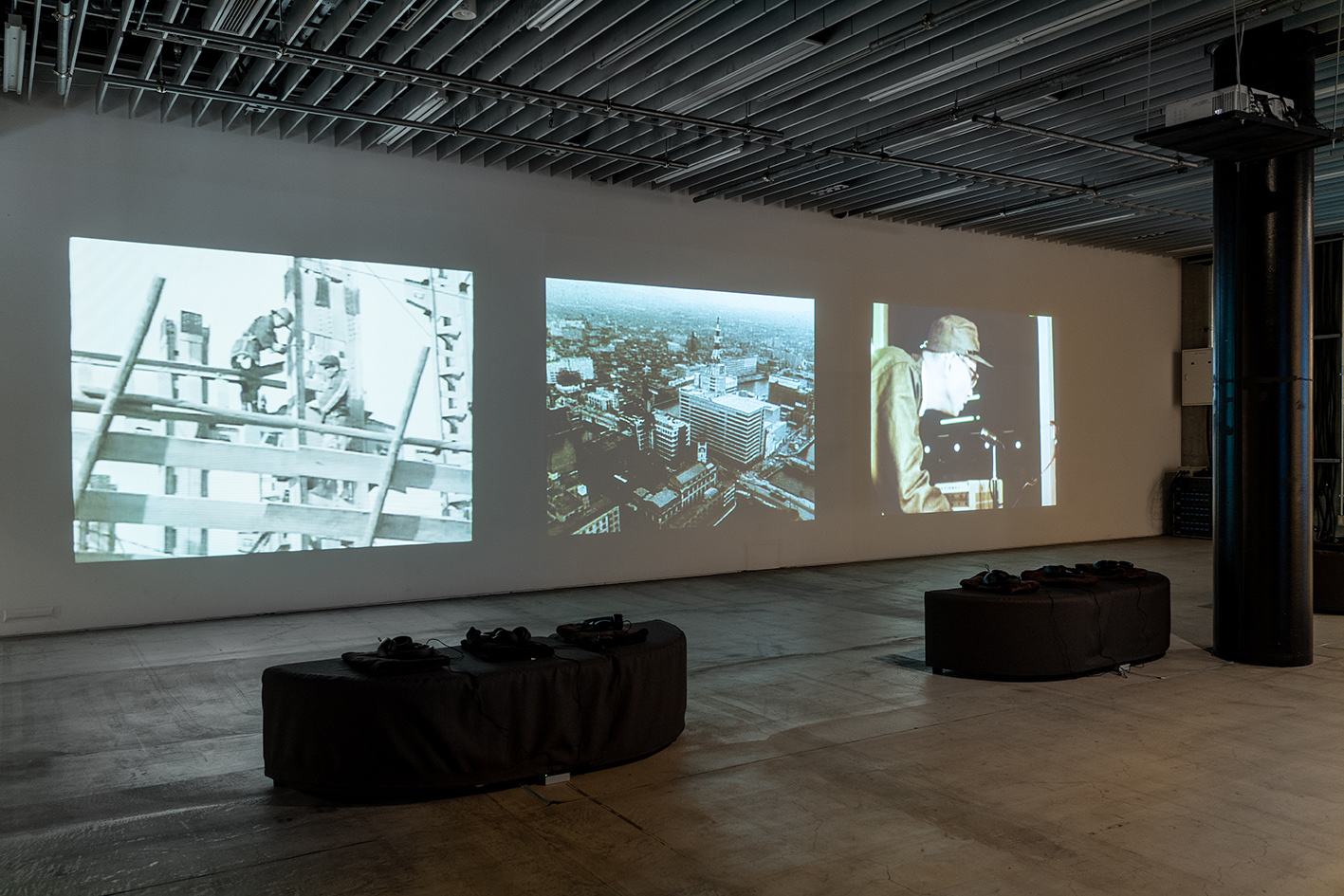
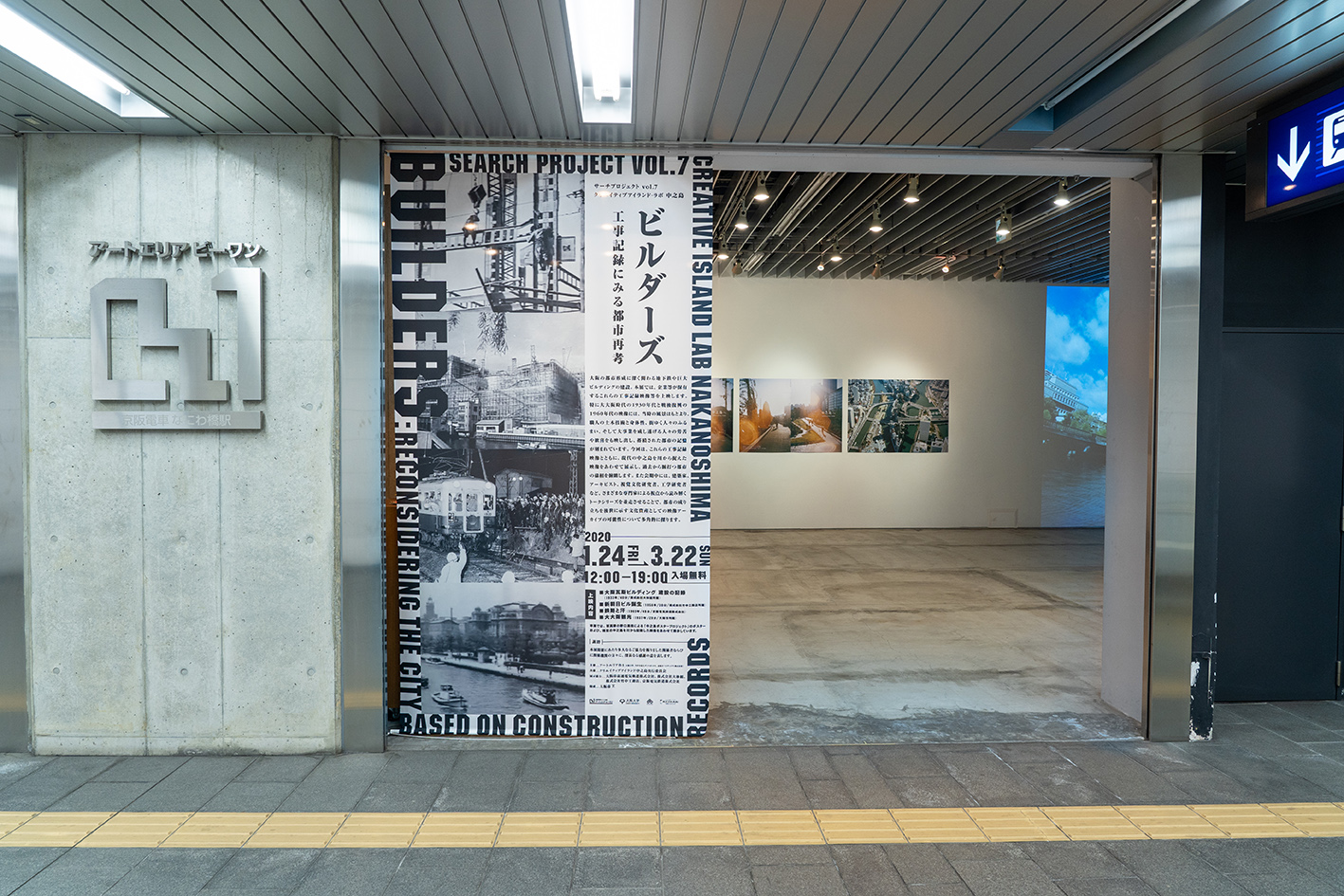
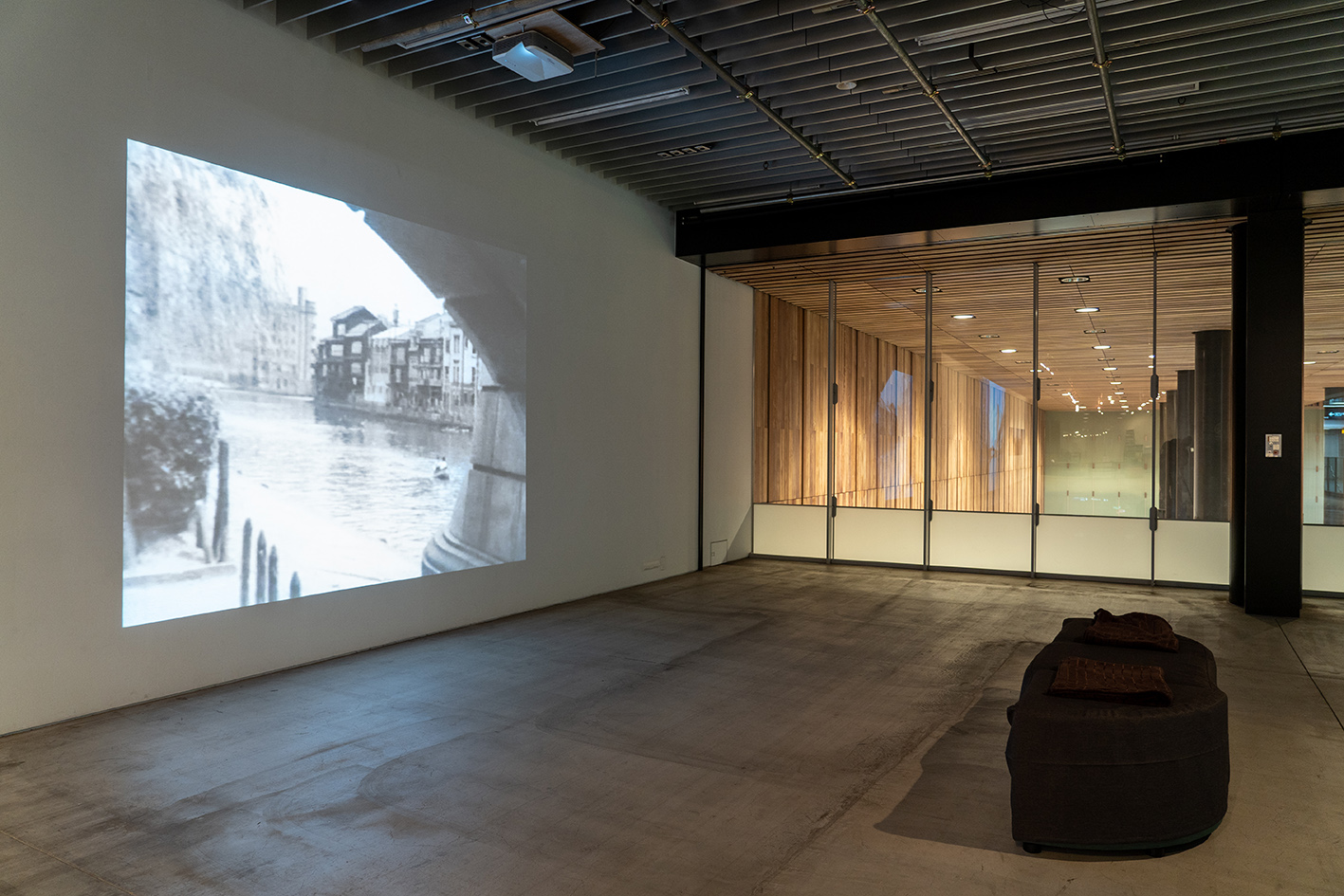
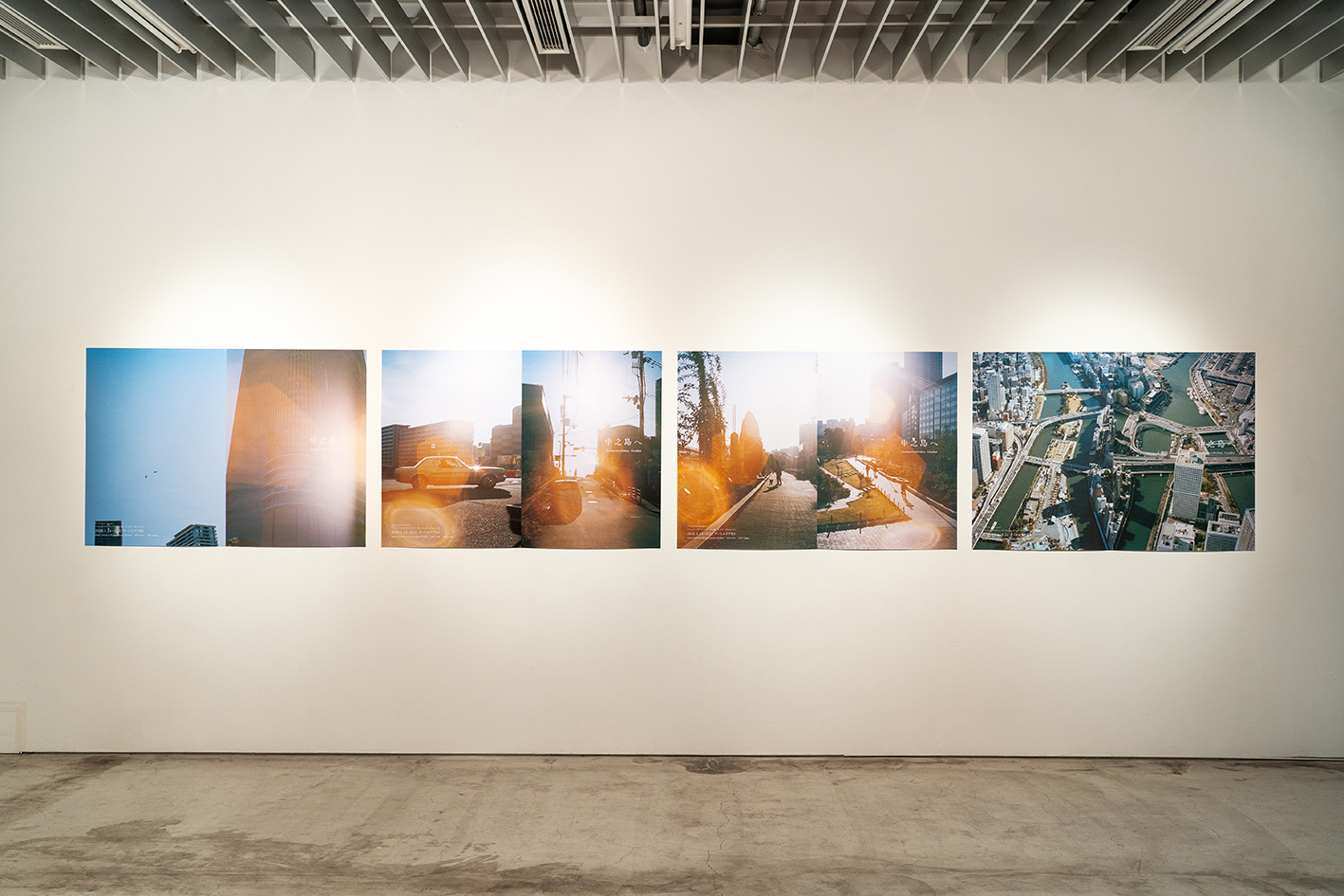
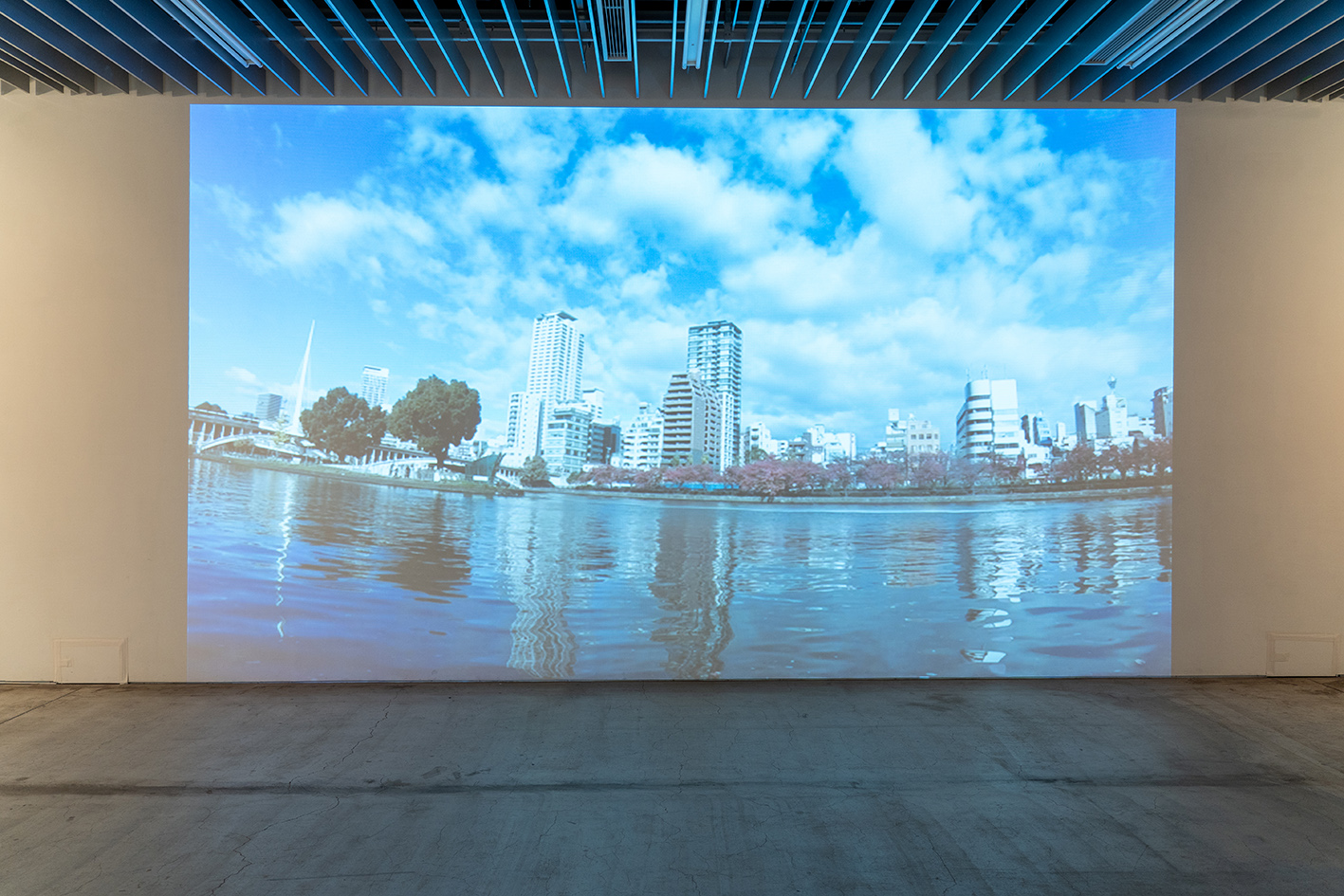
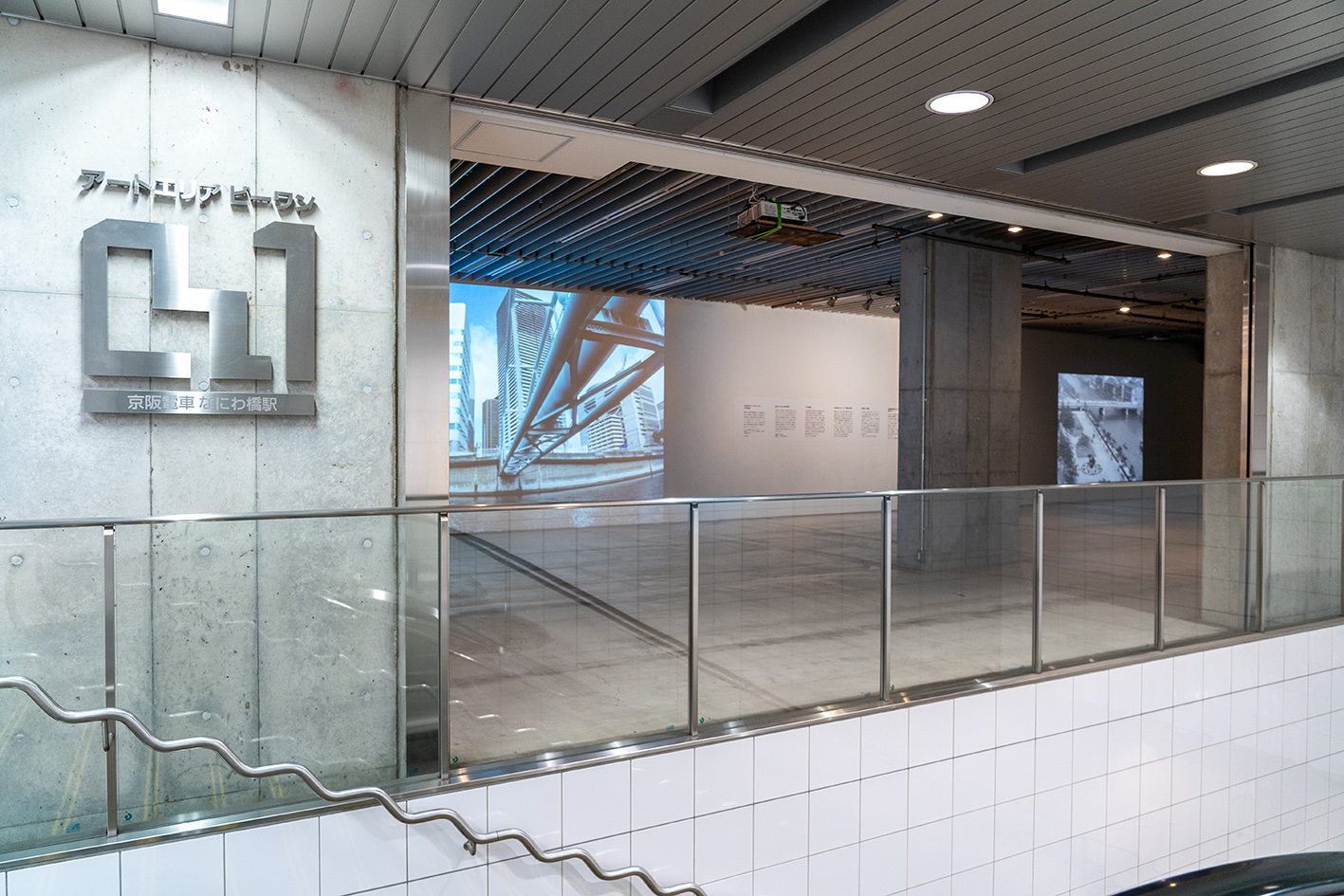
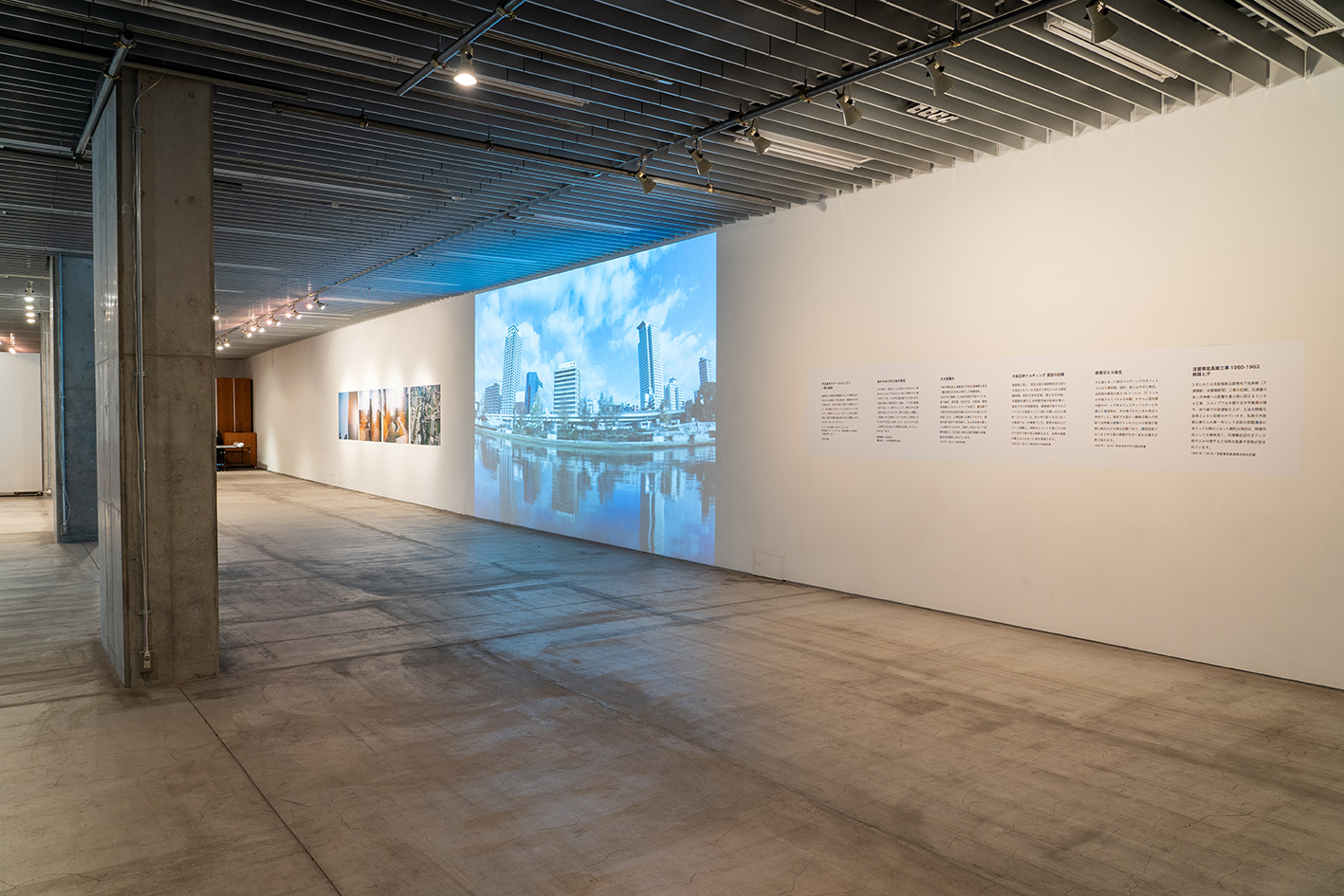
Series talk
Opening Talk "About the City Memory Architecture Archive"
A bird's-eye view of Osaka's architectural history and urban history research since the modern era shows a lot of attention to pre-war historical buildings, commonly called modern architecture, while building buildings and urban development from post-war to high-growth period unfortunately cannot be recognized. With the recent wave of redevelopment, post-war buildings were dismantled, and the materials at the time of construction were scattered and disposed of, the architectural urban culture of the post-war Showa era, which connects the pre-war and present, has fallen out of history, and eventually from memory It can be said that it is at risk of disappearing. This time, we invited construction companies, architects, archivists, intellectual property law researchers, and visual culture researchers to explore the possibilities of utilization while unraveling the preservation status of architectural archives, issues in preservation and disclosure, and historical and cultural values. This talk was held jointly with the Nakanoshima Museum of Art, Osaka Preparatory Office and focused on architectural archives in Osaka and Kansai, where the Preparatory Office is promoting the preservation and research of materials with Osaka City University.
Date and time: Friday, January 24, 2020 19:00 - 21:00
Venue: Art Area B1
Participation fee: Free
Guest:
Shinichi Takaoka (Associate Professor, Faculty of Architecture, Kinki University / Research Fellow at Osaka City University Urban Research Plaza)
Ayu Saito (Executive Assistant Professor, Kyoto University Museum)
Takuya Akiyama (Associate Professor, Center for Intellectual Infrastructure, The University of Osaka)
Morihiro Sato (Professor, Faculty of Design, Kyoto Seika University)
Akira Matsukuma (Principal Planning Division, Takenaka Corporation)
Cafe Master:
Keiko Ueki (Deputy Director, Research Office, Nakanoshima Museum of Art, Osaka)
Chieko Kinoshita (Art Area B1 Steering Committee Member)
Masakazu Minamitani (Director, Business Promotion Division, Management Division, Keihan Holdings Co., Ltd.)
Co-sponsored by: Nakanoshima Museum of Art, Osaka Preparation Office
Grants: Community Creation, Union Foundation for Art and Design
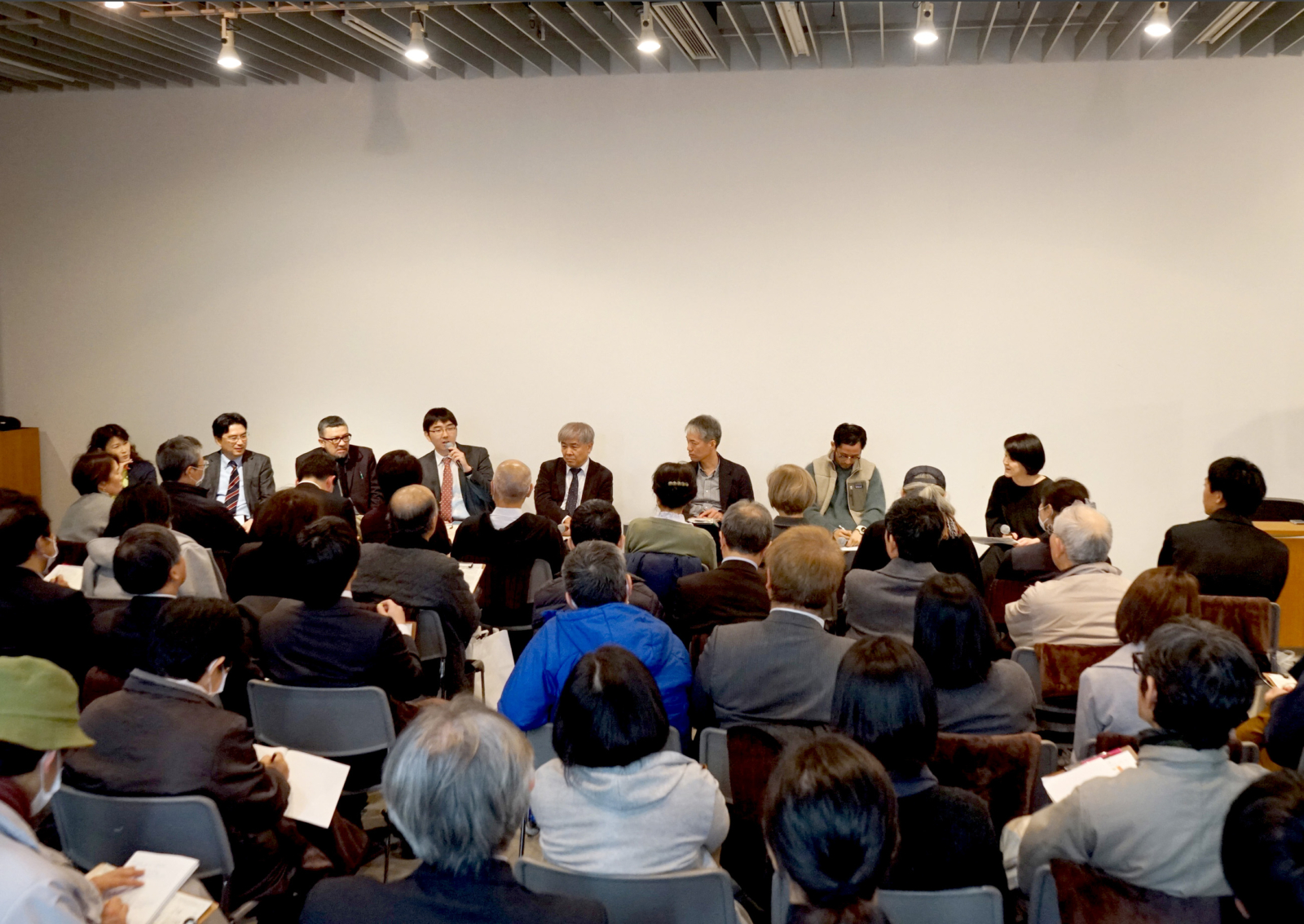
"Preservation and Utilization of Railway Archives and Its Charm"
Keihan Railway, which was founded in 1906, retains records of various major construction work that we have been working on to date. These images are not limited to the corporate history of a company, but also valuable video materials that convey the scenery and customs of the time and how the city was created. After driving the Keihan Railway, we invited Mr. Kazuhiro Nakanishi, currently Chief of the Public Relations Department of Keihan Electric Railway Co., Ltd., as a guest to talk about the preservation and utilization of the railway archive and its appeal.
Date and time: Thursday, January 30, 2020 19:00-21:00
Venue: Art Area B1
Participation fee: Free
Guest:
Kazuhiro Nakanishi (Chief of Public Relations Department, Keihan Electric Railway Co., Ltd.)
Cafe Master:
Tetsu Kubota, Takuo Kawakami, Hiroya Kimura (Art Area B1 Steering Committee member)
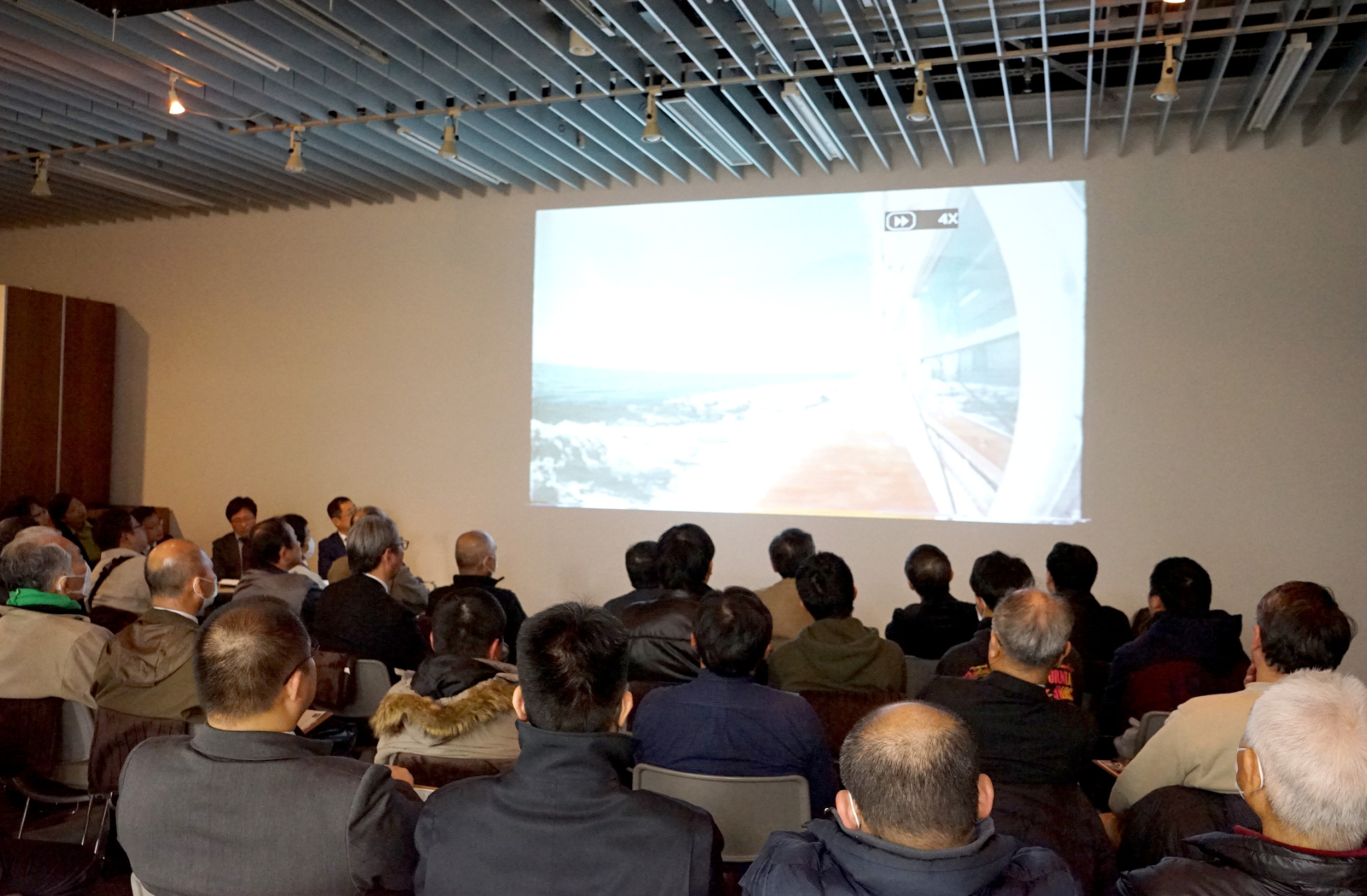
“Culture and Economy: Creation of a City from a Corporate Mecena”
In Osaka, the power of "people" greatly contributed to the development of the city, and the excellent buildings that remain today and the foundation of science and culture were established. Since the first year of Mecena in 1990, corporate support for arts and culture has become known, and since 2000, attention has been growing on corporate social responsibility "CSR". At present, based on the idea of a creative economy in which culture and the economy form both the circle of society, Mecena activities are being developed not only in support of arts and culture, but also in view of regional revitalization and human resource development. In 2019, Takenaka Corporation received the Grand Prize of the Mecena Award, which recognizes outstanding Mecena activities, and Keihan Holdings Co., Ltd. received the Excellence Award. While introducing the activities of companies related to Kansai culture, we focused on "creativity and creativity" in which the economy fosters culture and culture is the source of new economic activities, and held dialogues on the relationship between towns and companies.
Date and time: February 14, 2020 (Fri) 19:00-21:00
Venue: Art Area B1
Participation fee: Free
Guest:
Yasutomo Ishii (Professor, CSR Promotion Department, Corporate Planning Division, Takenaka Corporation)
Masakazu Minamitani (Director, Business Promotion Division, Management Division, Keihan Holdings Co., Ltd.)
Cafe Master:
Chieko Kinoshita (Associate Professor, Co-Creation Division, The University of Osaka Co-Creation Organization)
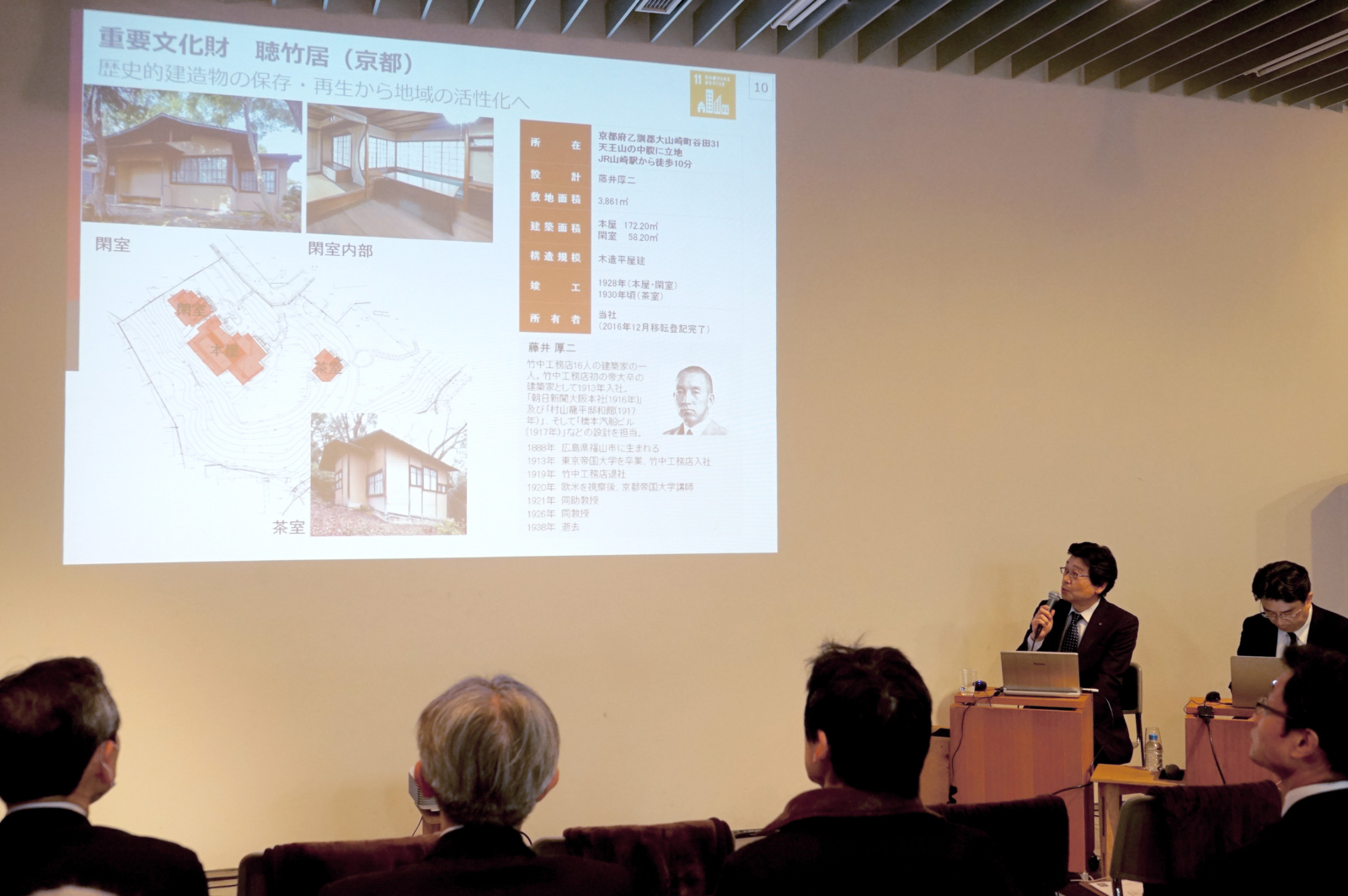
Results and Challenges
In this exhibition, along with the exhibition of images of construction records from the 1930s of the Great Osaka era and the 1960s of post-war reconstruction, the artist captured the city and the landscape of the current city recorded from the viewpoint of ships at the same time, I was able to highlight the various aspects of cities. In addition, by focusing on the assets that have few opportunities to be disclosed, we were able to uncover the diverse values of the assets, such as the artistic and material value of the recorded images, as well as society, architecture, corporate activities, and engineering technology from a historical perspective. Therefore, we planned a series talk together with the exhibition on the theme of each aspect, but it is disappointing that more than half of them have been postponed.
However, due to the theme of this exhibition project and talk, not only those who are interested in culture and art, but also those who are deeply interested in the surrounding office workers, architecture and community development, and Osaka as a company employee at the time of shooting recorded images were able to visit many people in their 70s and 80s who were working in Osaka, and we were able to develop a new audience.
